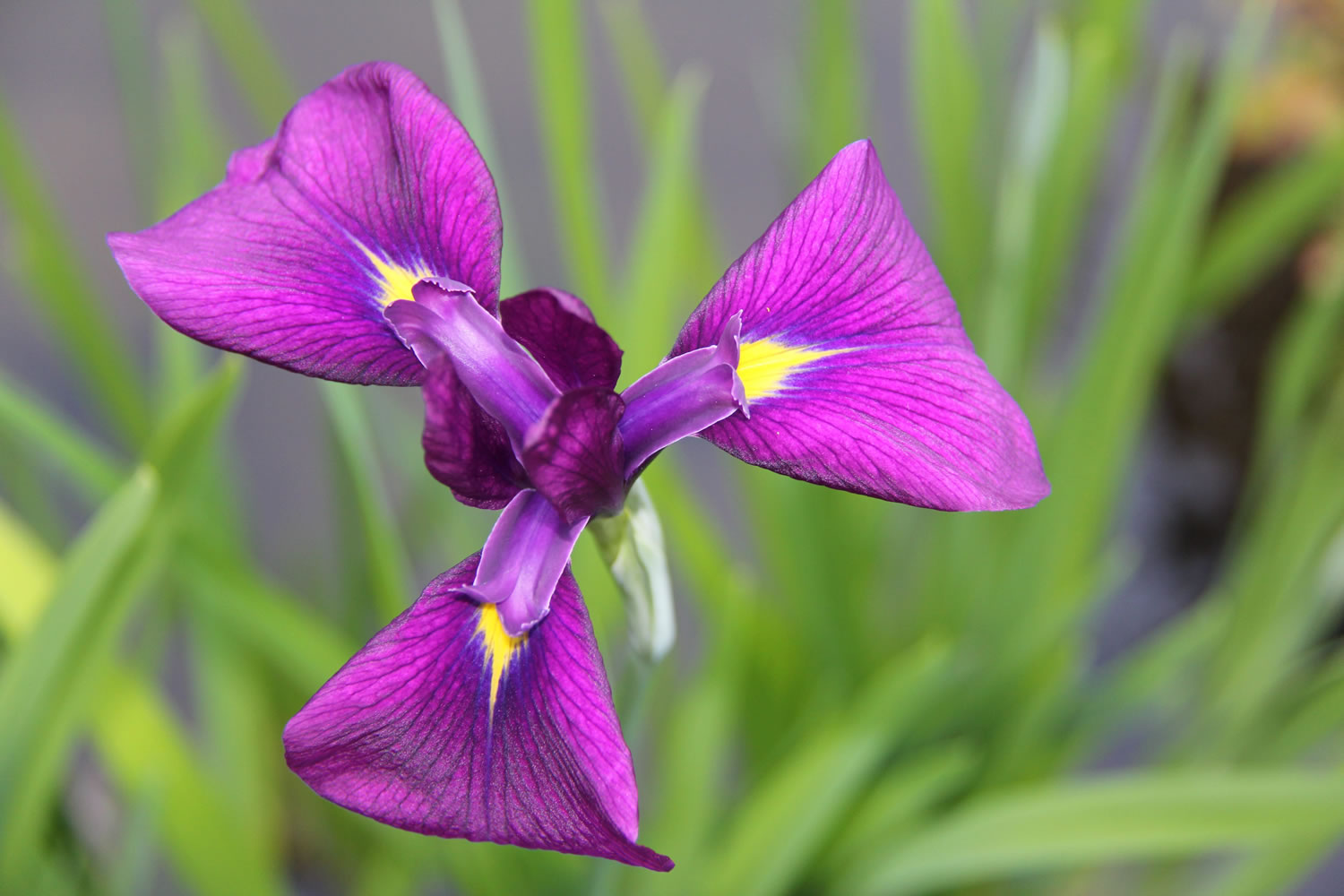Gardeners love the stately iris, immortalized in the classic “fleur de lis.” The distinct shape of the flower is used in garden ornament all over the world. The Japanese and bearded irises are two of the most popular garden forms. After flowering, if the rhizomes have stopped producing abundant flowers and have become congested, it’s time to divide and replant irises.
Before you take irises out of the ground, have a good look at the planting depth of those irises that bloom best in your garden. Many, including the bearded iris, will show a portion of their rhizome level with or even above ground level. Pay attention to the current planting depth so you know exactly how deep to place the divisions in the ground when replanting.
Using a large garden fork, you simply push the tines deeply into the soil beside the plant, press the handle of the fork down toward the ground (away from the iris) and lift the clump from the ground. Since irises grow so near the soil surface, this is an easy endeavor. Once out of the ground, wash off the roots.
Take the time to look closely at the structure of the rhizome system. It will be obvious which part of the root is healthy and which part has lost its vigor. Cut away and discard the oldest parts of the woody rhizome.
The pieces you replant should be 4 to 6 inches long with well-developed roots and healthy leaves. Trim the leaves down to about 2 to 3 inches long to reduce water loss. Replant the pieces on a slight ridge of soil, covering the roots with soil but leaving the tops exposed. Water in and wait. You will have fresh new plants early next summer.
• • •
Gardeners tell me all the time how pleased they are with their most outrageous potted planters. Many of my gardening friends have told me that they learned much about designing their overall garden by experimenting with container gardening. This really is the ideal medium to take some chances on plant and color combinations. If, by some chance, you don’t like the results of a container planting, you can change it until you are satisfied. I find myself creating two or three planters at a time so I can play around with a variety of plants before deciding which ones go best together.
There are always a few plants we have not planted before that would be perfect for container culture. The exotic canna lilies, especially those with richly marbled leaf patterns, can certainly stand alone in a large planter. Pots are a great way to try out the ornamental grasses. I like the elegant, wistful, Pennisetum orientale “Karley Rose” and also the shorter grass like Carex oshimensis “Evergold.” From here, the next step is to experiment with combining plants with different texture, color and size to see what characteristics of certain plants bring out the best in others.
For a perennial planter, the fantastic yellow and green striped Japanese forest grass Hakonechloa macra “Aureola” is a wonderful choice. With the slightest breeze, its graceful, slender arching stems give the effect of moving water. Add Nandina domestica, the dwarf heavenly bamboo, for height and contrast. Every couple of weeks, mix a liquid fertilizer in with the water you use for container plantings. Since water flowing through the soil leaches out nutrients, plant food needs to be replaced throughout the season for continued growth and flower production. If your plant’s soil should ever completely dry out, give it a couple of good soakings with unfertilized water before putting it back on a fertilizer schedule.
• • •
As long as you can guarantee a good supply of water and nutrients to the vegetable garden you can add a new crop of lettuce and spinach as well as cauliflower and broccoli for fall harvest in the vegetable garden. Try a mixed planting of leafy vegetables in an array of colors and leaf textures that will delight garden visitors and dinner guests alike.
Summer catalogs entice us to buy more and more varieties of garden vegetables. Here are a few adjectives used to describe the taste and shape of the simplest vegetable, leaf lettuce: crisp, buttery, delicate, sharp, pale green, dark red, mottled, wavy, tart, chicory, ruffled, well-wrapped, crinkly, mild, bitter-free, piquant, sweet, tender, smooth leafed, tasty and of course, delicious.
Robb Rosser is a WSU-certified master gardener. Reach him at Write2Robb@aol.com.



